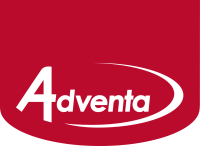We use cookies to make your experience better. To comply with the new e-Privacy directive, we need to ask for your consent to set the cookies. Learn more.
Guide to Cardboard Canvas, Creation and Mediums
Cardboard Canvas Guide
Cardboard canvases are low-cost and versatile, suitable for a range of creative mediums. Find out everything you need to know to create with cardboard canvas, as well as why you should stock them.
What is cardboard canvas, and what are its advantages?
For centuries, canvases have typically been made from fabric stretched over wood panels or bars. However, this traditional stretched canvas has been challenged recently, with many now making them out of different materials, such as cardboard, which is considerably more environmentally friendly than chopping down trees.
Surprisingly, some of the biggest advantages of cardboard vs wood are the cardboard’s superior strength and the tension that can be achieved with the canvas medium – if using the correct material and method.
Another main advantage is the premium-quality corners that cardboard canvas produces. It enables you to ‘tuck’ the medium inside the corners, whereas with a traditional wooden canvas, it is folded externally to the frame, which makes it very challenging to get a neat corner (similar to a gift wrap corner). Therefore, cardboard is often significantly neater than the wood alternative.
In addition to this, cardboard is a lightweight material that can be used to display stunning photographs in gallery format or painted to make your own beautiful art project. So if you’re wondering, “Is cardboard a good canvas?” the answer is yes: it is versatile, neat and affordable.
How to make a cardboard canvas from cardboard?
Some art and craft hobbyists have had good results in creating DIY canvas frames without wood, from hand-cut pieces of cardboard. They’ve created amazing cardboard art projects from just a few simple materials and tools.
However, if you are looking for more high-volume options, where time and consistency are important, there is the Adventa Quickpro system. We’ve designed these art boards to be constructed in just a few simple steps so they can be created in small or bulk quantities.
There are two designs with the Quickpro system for canvas making: the version that only requires a manual stapler is best for smaller production, such as copy shops and small printers.
The Auto Stapler is for higher volumes of +100 per day to speed up production. See the auto stapler in action here: https://www.youtube.com/watch?v=f2Li6Z7k6xo. However, the new version has an integral corner cutter, making it even faster.
In our experience, it is much easier to produce a professional premium result in cardboard than wood! It’s faster, neater, and more affordable, and the warped cardboard panels are lightweight and easily stored. What could be better?
What mediums can I use on cardboard canvas?
One of the big advantages of cardboard canvas is that you can use many different mediums if stapled correctly.
The two main types of canvas are cotton and polyester. Both are ideal for the cardboard canvas, but polyester is the most common and will give very good results when printed with the popular entry-level aqueous inkjet wide-format printer.
Also, papers work well, including embossed, satin, and glossy paper. Normally, it is best to avoid laser printing as the toner print can crack on the edges. We find inkjet best.
Some companies have produced them by printing directly onto cardboard to create a printed cardboard ‘box.’ However, this is difficult to market as a ‘canvas’ because it has no genuine canvas attached.
What kind of paint can I use?
If you are creating classic cotton canvas panels, a wide range of painting techniques and types can be used on the finished canvas. Acrylic paint, oil paint, acrylic gesso, spray paint, and more can be used. If you’re looking for the best paint for your cardboard canvas, however, we recommend acrylic paints in thin layers.
How to hang a cardboard photo canvas
Similar to traditional stretched canvases, cardboard canvases can also be hung up using conventional nail or screw wall fixing. A feature that some companies like about cardboard canvas is that it is safe to hang in young children’s rooms as, if it does come off the wall, it is very unlikely to cause any damage due to its lightweight nature.
The Adventa Quickpro Cardboard canvas makes mounting easy, as it has holes for both portrait and landscape formats. This is a great feature as you don’t need to stop and think about what orientation to make your cardboard canvas!
Thanks to being lightweight, you can also use specialist removable adhesives. Examples include 3M Command and also the proven option from Adventa. Adventa has the unique StickY-Hook, which pushes into the back integral hole and you can wall mount your canvas easily and relocate whenever you like! Simply visualise it in real-time before settling on its final position!
Want to stock Adventa’s cardboard canvases?
Our commitment to innovation, automation, and quality products has made us an industry leader in designing, manufacturing, and supplying unique, easy-to-use blank products to suit any requirement. Since 1983, we have been providing solutions for companies like yours, and we are proud to present our cardboard canvas range, which provides an excellent flat surface for photographs or paintings mounted on gallery-quality canvases.
To find out more about our fantastic product range, feel free to browse our website or get in touch with us at 1844 458 0106.
We offer trade and wholesale quantities and deliver all across the US.

